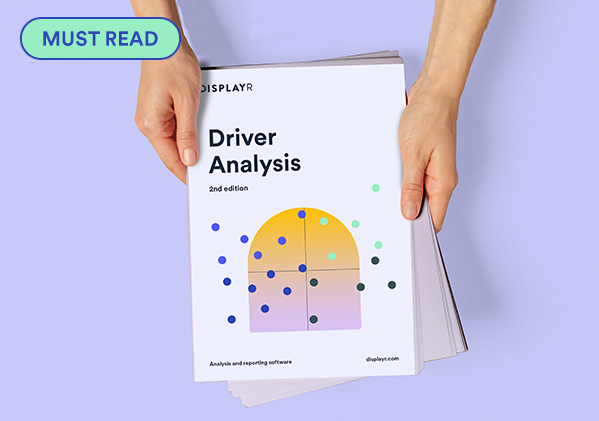
How To Identify Key Drivers of Your Net Promoter Score

Doing driver analysis with your Net Promoter Score allows you to gain a deeper understanding of your customers and their responses to your survey. An NPS response tells you how likely a customer is to recommend your product; conducting a driver analysis on your NPS will identify the factors behind their response.
What is driver analysis?
A customer feedback survey should aim to answer two questions when it comes to the Net Promoter Score (NPS):
- How likely are your customers to recommend your product or service?
- What are the key factors influencing your customers’ likelihood to recommend your product or service?
The first question is answered simply by calculating the Net Promoter Score. The second question is a lot harder to answer and involves what is commonly known as ‘driver analysis.’ The underlying goal of driver analysis is to determine the key attributes of your product or service that determine your Net Promoter Score. These attributes are referred to as ‘drivers.’
Driver analysis requires that you ask some follow-up questions about how the respondent would rate different attributes of your brand. For example, a tech company could poll customers on a range of brand perception attributes – fun, value, innovative, stylish, ease of use, etc. – to determine the key Net Promoter Score drivers.
Driver analysis often requires the use of statistical methods like linear regression modeling and relative weights analysis, which is more advanced than most forms of survey data analysis. However, it is well worth the effort.
Ready to analyze your text?
Start a free trial of Displayr.
Why is NPS driver analysis important?
Net Promoter Score analysis is a great first step, but the simple statistic doesn’t tell you anything about why your customers are likely (or unlikely) to recommend your product or service. Driver analysis allows you to pinpoint the key factors driving their responses.
This information can influence how to tailor your product and where you focus your efforts. If a tech company finds that being perceived as ‘fun’ is a larger driver of NPS than being perceived as ‘innovative,’ then they may alter their marketing strategy to adopt a more ‘fun’ approach.
A practical example of NPS driver analysis
To better understand NPS driver analysis, let’s dive into a real-world example. Using Displayr, we analyzed NPS data from 14 large technology companies to determine which brand perception attributes played the largest role in influencing Net Promoter Scores. Survey respondents were asked how likely they were to recommend the given brands, as well as whether they associated the brands with specific perception attributes.
Regression modeling
To perform the driver analysis, we used two regression models to determine the effect of each brand perception attribute on a respondent's NPS response.
The first model is an ordered logit model, otherwise known as an ordered logistic regression. The model estimates the effect and significance each brand attribute has on overall Net Promoter Scores.
The ‘Estimate’ column measures the effect each brand attribute has on Net Promoter Scores. The larger the number, the larger the effect. The ‘p’ column measures the statistical significance of the brand attribute. If a brand attribute has a value below 0.05, we can conclude that it plays a significant role in determining NPS.
The second model is similar to the first, but there is one important distinction. Instead of estimating the overall effect each brand attribute has on NPS, it estimates the ‘relative importance.’ This means that it estimates the importance of each brand attribute in relation to the others.
The relative importance of each brand attribute can be interpreted as a percentage. For example, our model suggests that ‘fun’ accounts for almost 25% of the variation in NPS.
Data visualization
The two regression models have unpacked a lot of useful information and insights from the data set. Now it’s time to communicate our findings. To do this, we will create a data visualization that is both informative and easy to interpret.
The bar chart ranks the relative importance of each brand attribute, allowing us to compare their effects. It is easy for anyone to see that ‘fun’ is the most important attribute without having to interpret regression output data.
Net Promotor Score analysis and beyond
Driver analysis of NPS is all about trying to understand the 'why' behind customers and prospects feel the way they do about your brand. But gaining this insight doesn't have to end with driver analysis.
Displayr's AI text analytics tool allows you to easily code, categorize, and analyze customer feedback surveys. You can then use generative AI capabilities to identify specific drivers and make recommendations on how to change these factors moving forward.




